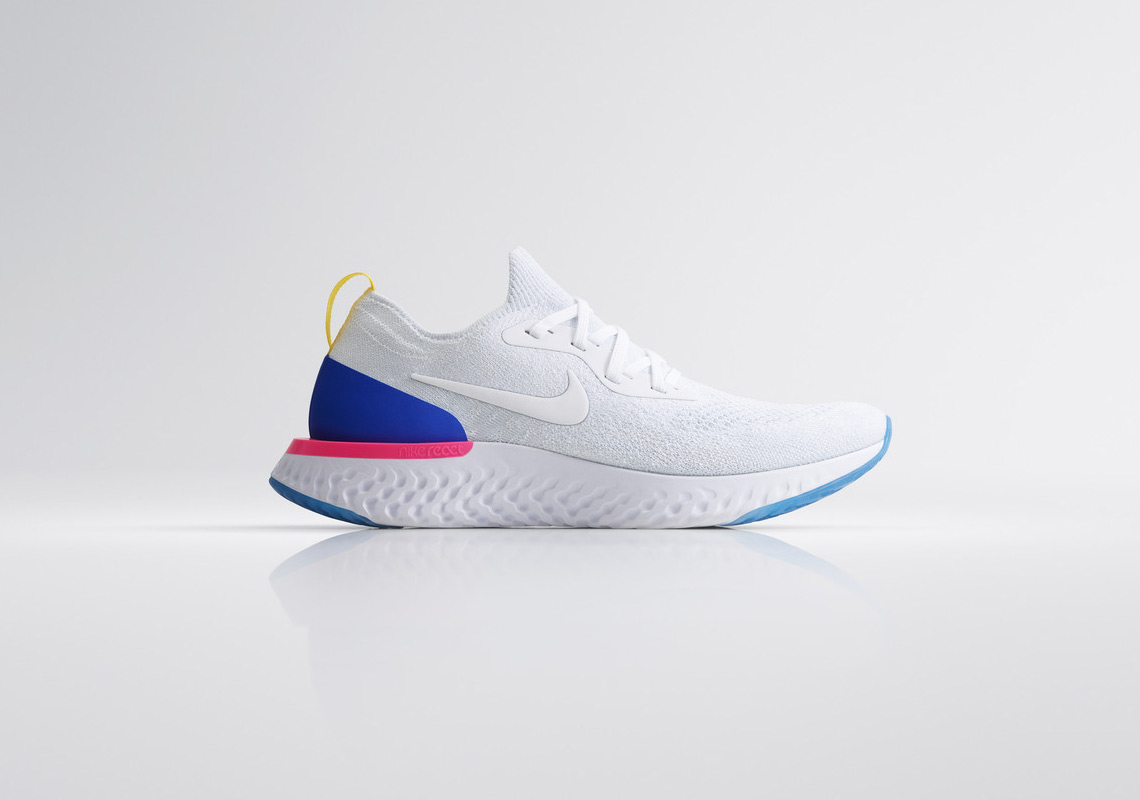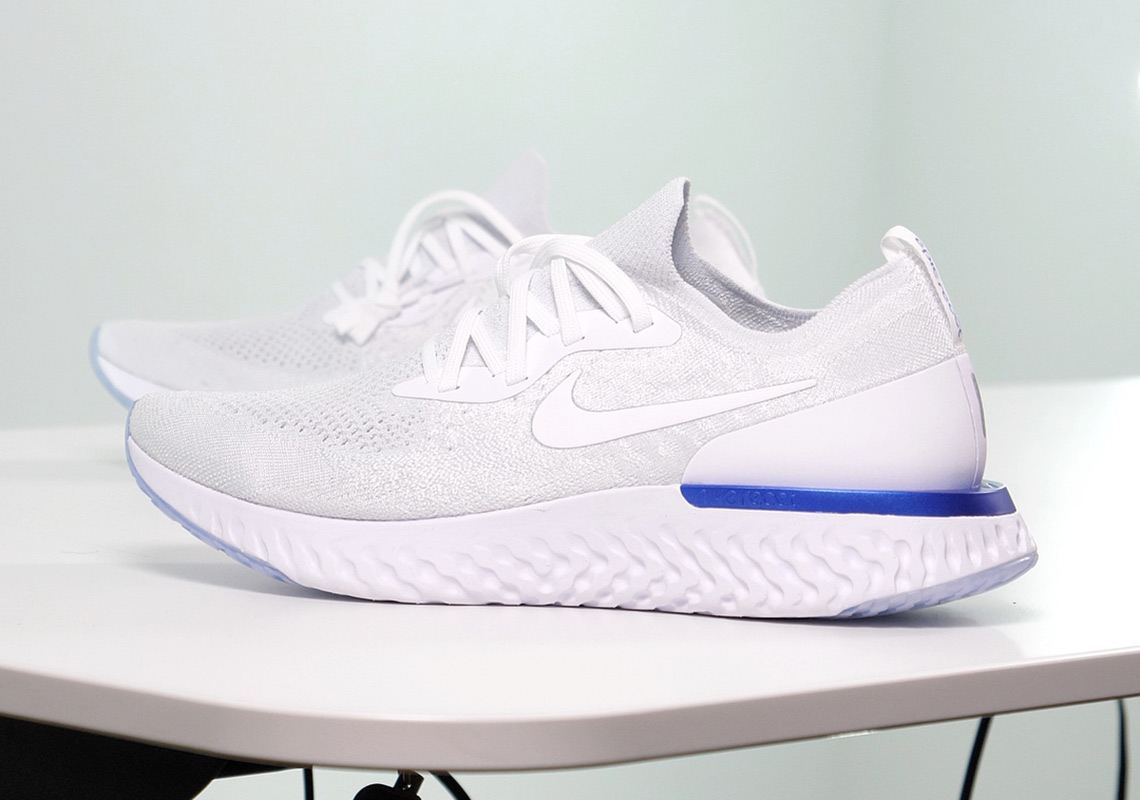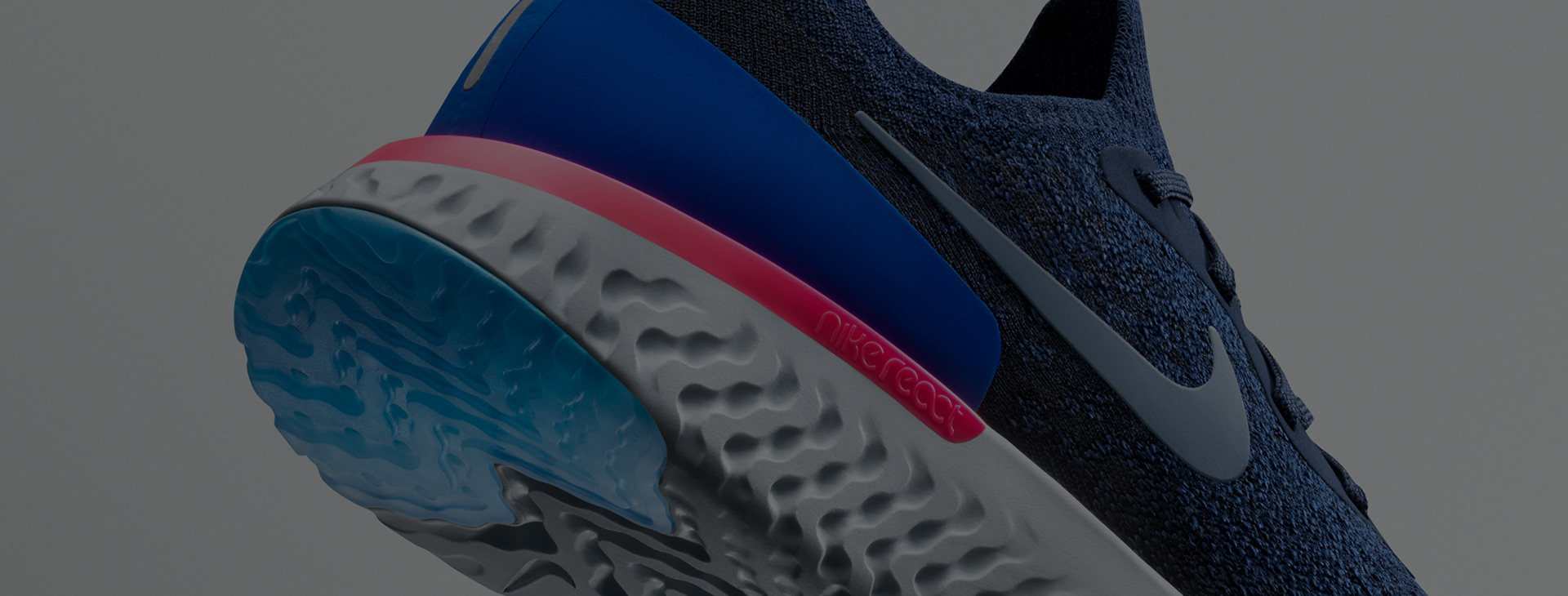
Nike React was originally introduced in the Summer of 2017 with the Hyperdunk 2017 and Jordan Super.Fly 2017, but the foam was fully encased by a rubber outsole and a plate. The Nike Epic React running shoe fully exposes the proprietary material to the ground, giving runners and casual wearers an uninhibited React experience. We received a pair today and tested them out. Here are our first reactions to next chapter in Nike’s storied cushioning legacy.

The three-dimensional pattern that spans the entire outsole and midsole sidewall of the shoe is computational design derived from a thousands of data inputs of pressure maps, which the Nike Sports Research Lab combined into one algorithm. There’s additional traction at the toe and heel for added stability, while the heel support at the top of the midsole is a nod to the Nike Internationalist, the running sneaker that debuted the horseshoe-shaped TPU mold. A sock-like snug upper made of a stretchy knit, a low ankle cut collar around the ankle bone, and the extended lip at the heel for stability is a working formula for what runners need today. Nike pointed specifically at the Flyknit Racer as a guide to the design, while noting the slim-looking toe from the Vapormax. Basically there’s a lot of in-house next-level science behind the design, which Nike prides itself in.

To put the Epic React to the test, Nike invited select media/influencers/bloggers to a special product unveiling in NYC with an obstacle course. A foam pit with soft cubes, a mini-relay with pillars made of tires, a wind tunnel with feathers, and a bouncy platform to test hops were stationed – all with the purpose of trial-ing the new running shoe in four different environments of mobility. To give the shoes a more real-world test, I walked back from the event space to the office; throughout the 1.2 miles the shoes produced a forward-propelling effect – the so-called “energy return” aspect – that kept me light on my toes. REACT foam is much softer than traditional EVA foam, so Nike had to make the sole thicker to prevent it from flattening over time – a common problem with other foam-based cushioning units in the market today. Despite its thickness, the support on the Foam is zonal so there is not “boat”-ish feel to them. As a casual everyday shoe, the Epic React is definitely recommended.

From an aesthetic standpoint, there have been some comparisons to the Ultra Boost, one of the most popular running/casual sneakers of the last three years. It’s an understandable comparison given the competition between the brands and the fact that both shoes feature similar ingredients – foam-based soles, knit upper, heel protection. The Epic React has a wider forefoot base and weighs considerably less; a men’s size 10 Epic React weighs 8.3 ounces, while a men’s size 10.5 Ultra Boost weighs 11.7 ounces (and the extra half-size certainly does not make up for the 3.4 ounce difference). Additionally, the Epic React is a little more forgiving to those with wide feet. One issue with the Ultra Boost is that the Boost soles tend to flatten; how the Epic React pans out over miles of use remains to be seen.

Photo: kustoo
The Epic React is simple and sleek, with bold accents on the heel acting as the lone hits of color contrast. There aren’t any superfluous details, and that’s by design as Nike typically introduces new technology with somewhat understated designs (i.e. Vapormax). The main attraction is, of course, the new Epic React cushion unit – one that we firmly expect to appear in other running and lifestyle models as it continues to evolve. If you’re interested in the Nike Epic React, the NikePlus app will release a white/blue colorway on February 5th. Two more colorways (as well as the white/blue) are set to release on February 22nd for $150.











